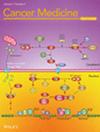Occupational Disparities in Cancer Survival Among the Working Population in Japan: 10-Year Survival Analysis Using the Kanagawa Cancer Registry
Abstract
Background
Limited data exist on occupational disparities in long-term cancer mortality among the working-age population in Japan. We examined occupational disparities in long-term cancer survival, focusing on 10-year survival outcomes among working-age populations.
Methods
This retrospective observational study used data from the Kanagawa Cancer Registry of 41,632 patients with cancer aged 20–65 years who were diagnosed between 1992 and 2015, with a 10-year follow-up. Patients were classified into four occupational classes based on their longest-held occupations (upper nonmanual, lower nonmanual, manual, and primary industry). The primary outcome was all-cause mortality, and cancer-specific mortality was the secondary outcome. Poisson regression was used to estimate the mortality rate ratios (MRRs) and 95% confidence intervals (CIs) for each occupational class, adjusted for sex, age, and year of diagnosis. Additional analyses were performed for common cancer sites (stomach, lung, colorectal, and breast).
Results
MRRs for all-cause mortality were higher in lower nonmanual (MRR = 1.14, 95% CI 1.10–1.18), manual (MRR = 1.38, 95% CI 1.32–1.43), and primary industry workers (MRR = 1.19, 95% CI 1.09–1.31) than in upper nonmanual workers (professional and managerial occupations). Similar patterns were observed across common cancer sites and cancer-specific mortality. Adjusting for cancer stage and treatment attenuated these disparities but did not eliminate them, particularly among manual workers.
Conclusions
We observed occupational disparities in long-term cancer mortality among working-age populations in Japan, with manual workers experiencing worse survival outcomes. Promoting targeted interventions, healthy lifestyles, and early cancer detection for cancer survivors in the workplace are crucial for mitigating these disparities.


 求助内容:
求助内容: 应助结果提醒方式:
应助结果提醒方式:


